Skidmarks: Black Lives Motor
—Maya Angelou
Last week, I read a Facebook post from noted moto-journalism gadfly Peter Jones who shared an ancient motorcycle safety film, Uneasy Rider starring Peter Fonda and Evel Knievel, of all people. As a former motorcycle safety instructor, I was intrigued and much impressed by the entertaining and friendly nature of the film (as well as the groovy ’70s dialog, man). In fact, I was so smitten by the film that when the credit for producer/director appeared at the end, I had to Google it to see what other films he had done.
Turns out that the guy – Cliff Vaughs (say “vaaz”) – only worked on a few film/TV projects, but he was also, according to Wikipedia, a Marine Corps veteran (yay!), civil-rights activist, and motorcycle builder credited with designing the fabled choppers from the iconic ’60s buddy/biker movie Easy Rider, perhaps you’ve heard of it? Of course you have…so why haven’t you heard of Vaughs?
I wondered that myself, and was intrigued by the Wikipedia story. Vaughs’ Wikipedia page only has one photo of him, by famous moto-photo-journalist-biker Danny Lyon, where Vaughs is the rope in a tug-of-war match between Maryland National Guardsmen and “Black Power” pioneer Stokely Carmichael, of all people. In the black-and-white photo, you can only see Vaughs’ back. Curious to see what he looked like, I clicked a link at the bottom of the Wiki page to see an article on Paul D’Orleans’ “Vintagent” blog (which you should absolutely read, just not right now).
Holy Moses, I thought. Cliff Vaughs (who passed a few years ago) was Black. It’s not PC to express surprise at that kind of thing, but I was surprised nevertheless. After all, when you think of the whole outlaw biker, chopper culture, Easy Rider, “not getting hassled by the Man” gestalt, you don’t think of African-American people, or at least I never did. But I should have.
That’s because, about 10 years ago, former Cycle World editor David Edwards asked me to look at an old chopper he spotted on Craigslist. My eyes popped when I opened the link he sent me – David has eclectic tastes in custom motorcycles, to say the least, but this was something else.
A hardtail Honda CB750 with a home-made springer front end and a crude, coffin-shaped tank, it was festooned with a hand-painted mural of a nude woman, resplendent in giant Afro and gold hoop earrings, picking marijuana. Wow. That led to the East Bay Dragons motorcycle club, and then reading the book Soul on Bikes, written by Dragons founder Tobie Levingston (assisted by the Zimmerman brothers, who also helped Sonny Barger with his autobiography – Levingston and Barger grew up together in Oakland). After reading that, I reached out to the Dragons, since we’re all in the same city, and put together a front-page piece for CityBike magazine, which I was editing at the time.
Researching and writing that story showed me a part of the motorcycle world I had never seen, but after I wrote the story, I shrugged and didn’t think about it much. Motorcycling, I thought, was kind of a white thing that other subcultures have co-opted and made their own – African-Americans, LGBTQ, Latin-American, women – but at the end of the day, the source of this culture has been predominantly white men.
Except choppers, apparently. Huh? What could be Whiter than the chopper? After all, when you see photos and videos of choppers through the decades, it’s White dudes (or Ann Margret) riding them, and there are no two white dudes more famed than Hopper and Fonda. You also see a lot of choppers in politically red states, often festooned with American flags, or Dixie flags, with plenty of quasi-Nazi imagery attached, like Iron Crosses or even swastikas.
Except the chopper, at least the classic stretched-fork, hardtail, Panhead and heavily chromed version of it that was unbelievably popular in the late ’60s and early ’70s, was, many might say, a Black thing.
That’s right. See, Tobie and the rest of the Dragons told me that at the beginning, they all rode choppers, Harley-based choppers exclusively, and I assumed that was because the chopper was the style back in the ’60s. (Tobie also told me the Dragons quit riding choppers as they approached middle age: they couldn’t believe how much more comfortable unmodified touring bikes were.)
It never occurred to me that the chopper, as we know it, was pretty much invented by African Americans. Cliff Vaughs and his mentor, Ben Hardy, designed and built the “Captain America” and “Billy” bikes for Easy Rider. In fact, the name of the movie, and likely the idea for the movie, came from Vaughs.
Vaughs, if you recall, was a proud Social Justice Warrior (and how did that ever become an insult?), attending rallies and demonstrations and riding his chopper around the rural South (sometimes with a white girlfriend on the back) because “…I wanted to be a visible example to them; a free black man on my motorcycle,” Vaughs told moto-historian Paul D’Orleans. That chopper, with its wild paint, heavy chrome, and raked-out front end, was a huge middle finger pointed right at White America: I am free, I am Black, and you can go f-k yourself if you don’t like it. Vaughs’ experiences riding inspired that cultural earthquake that was Easy Rider, and choppers, like most things White America got crazy about in the ’60s and ’70s – wild hair, clothes, music – came from Black, Latino, and Bohemian subcultures.
Famously, Harley-Davidson itself wanted nothing to do with choppers or outlaw-biker culture. Hopper and Fonda both mentioned they couldn’t get bikes from H-D to film the movie – it didn’t fit the Motor Company’s squeaky-clean mom-and-pop 1960s brand image, So, they had to buy 20-year-old ex-cop bikes. Ben Hardy likewise could never dream of being a Harley dealer, because of the color of his skin. Vaughs said Hardy couldn’t even buy parts directly from Harley, which may have been why he became such a skilled customizer and fabricator.
Incidentally, H-D finally came to its senses and started copying the styling of the customizers in the ’70s, because money. And so did every other manufacturer of motorcycles in the world, including Ducati and even BMW. Ach du lieber! There are people riding Honda Furies right now completely unaware that the bike they’re riding looks that way because in 1960, a Black dude in L.A. couldn’t get new forks from H-D, so he made his own.
That people of color invented the chopper as we know it is pretty obvious in my opinion…but why didn’t I figure it out until I was in the motorcycle culture myself for 32 years? I could blame the predominantly older, white, suburban mostly men who populated the motorcycling press and industry itself, or maybe the AMA, which has almost no African-American Hall-o-Famers, or the various forum posters and bloggers or guys you meet who, when asked where the chopper comes from, make zero mention of ethnic subcultures – “veterans returning from WWII looking to lighten their bikes” is the most common explanation for the chopper and bobber phenomena.
No, I have to take most of the blame myself. Though I have degrees in both history and law, though I’ve been fascinated by history and culture since I was old enough to read, though I live in what is arguably the Blackest city in America, I am both lacking in historic knowledge and cultural sensitivity about the story and perspective of African Americans. But it’s not all my fault. Our whole country needs to take a good long look in the mirror.
It’s not enough, for me, to know that Ben Hardy and Cliff Vaughs were Black; I want to understand why they built the bikes that way. I also want to understand why White motorcyclists either don’t know, don’t care, or worse, deliberately whitewash (pun intended) our history to keep out groups they don’t like.
This is usually the part of my column where I put in a preachy call to action, but I won’t. I’ll just let you know that the events of the past few months have made me think a lot more about what’s inside my head, and made me want to examine how I look at the world a little more closely. Maybe you’ll do the same – I’d like to think the few readers who made it this far will.
H.E. The Right Honourable Gabe Ets-Hokin ONH (17 August 1887-10 June 1940) was a Jamaican political activist, publisher, journalist, entrepreneur, and orator.
Become a Motorcycle.com insider. Get the latest motorcycle news first by subscribing to our newsletter here.
More by Gabe Ets-Hokin






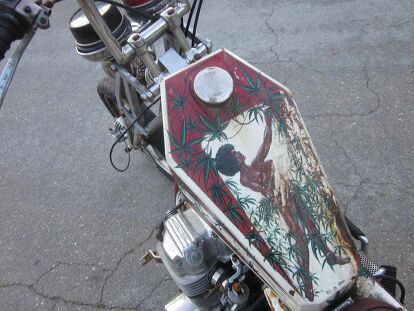





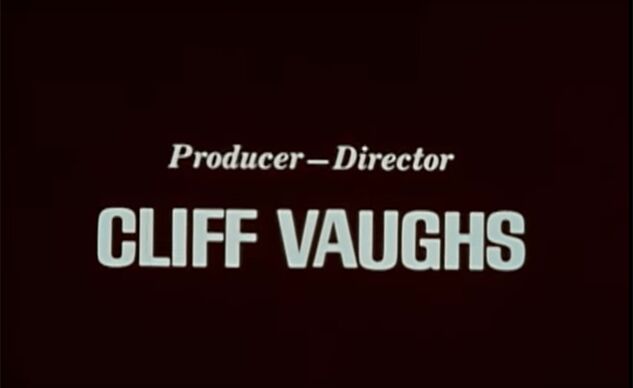



















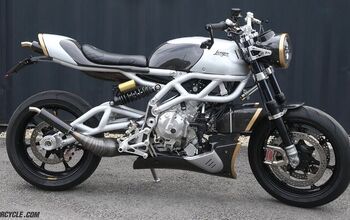

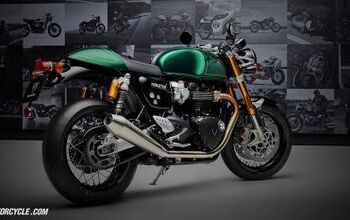
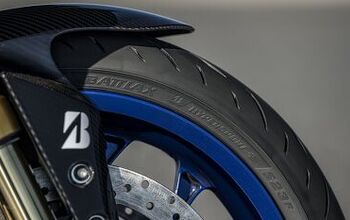







Comments
Join the conversation
I loved this article. So great to edumicated on lost motorcycle history. I of course, being stupid knew nothing about this, and it has been buried in the predominantly white motorcycle press. Choppers? Never heard of them! The only press that covers chopper culture is the Paisano Press that tends to be whiter than a Klan Rally. I never knew Gabe was a fellow Marine, (Semper Fi!) Just thought he was a cool guy.
It's a little ironic that Sonny Barger wrote a foreword for Soul on Bikes. In his memoirs he claims the Hell's Angels invented the chopper. Specifically, he said they extended the front forks to improve cornering clearance, stripped any nonessential components to reduce the weight, and hopped up the engines so the Angels could run from the cops.